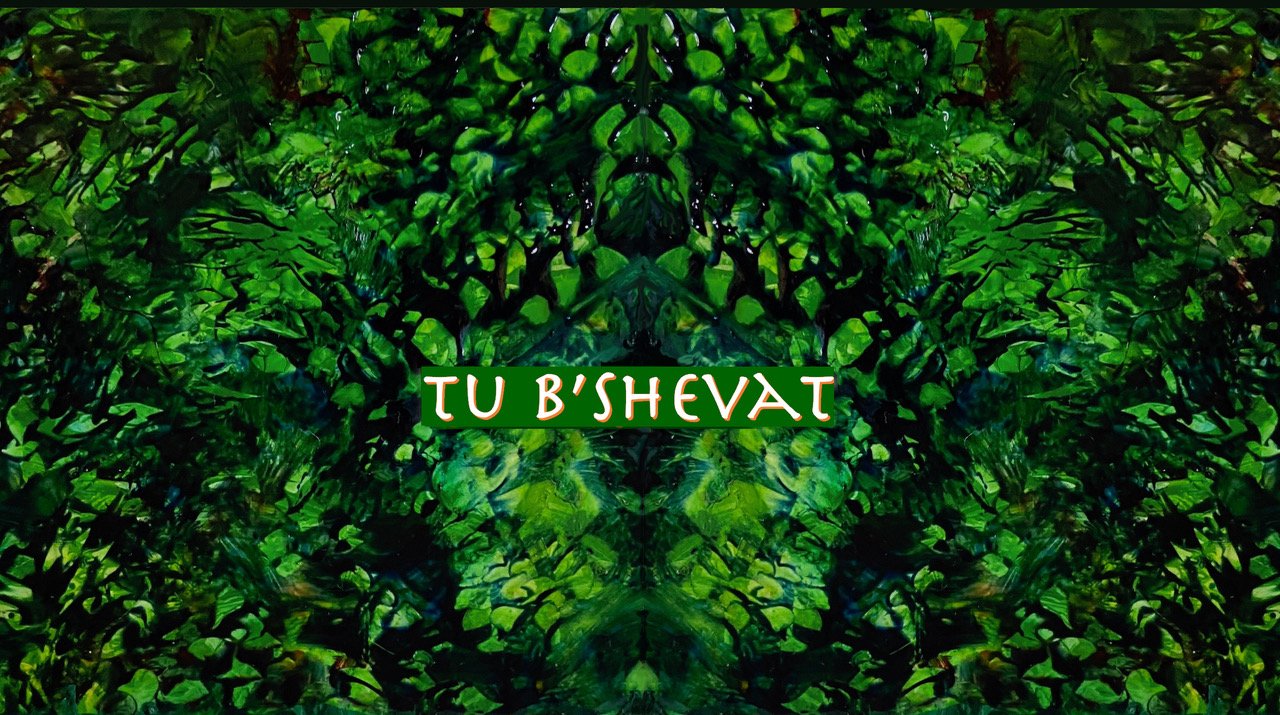Trees of My Childhood
Cindy Ruskin - Tufts of Tune (Digitally-manipulated oil painting).
See more of her work HERE.
Dear friends,
Of the many trees of my childhood neighborhood in Jerusalem, there were a few individuals that I developed a relationship with. The cypress tree in the neighbor’s yard across the street was climbable, and became "the headquarters" for a couple years. It had that dry smell, unavoidable because climbing up necessitated moving your head through its stringy leaves. Around the corner in another yard, the strawberry tree, as we called it, would fill with mulberries as the heat would come, and I’d spend hours making my way along its thick, sturdy branches to reach the lushest fruits. In Bilu park I’d hop onto the lone Olive tree in the middle of the grassy slope, touch its smooth, silver-green leaves, and watch its inedible olives grow fat, or pick them and hurl them at my brother. Not far from the olive stood an enormous cypress that shot up into the sky like an arrow. Climbing up was a dream, a challenge I would fulfill only once during high school, and only halfway up. This one had a different personality than "the headquarters," more stately and aloof, and certainly much wiser, and though harder to ascend, it didn’t make your hands all sticky like the pine tree in our yard. I can still tell you exactly where to pick (sometimes wormy) apricots, tangy cherries, fat lemons, honey-sweet figs and shesek (loquat) in a three minute radius from my parents house.
During this time of year, the drive up to Jerusalem is majestically white, not from the snow but from the blooming almond trees everywhere, the Shkediya. When on Tu Bishvat, the New Year for the Trees, we’d be piled into buses with the rest of the city’s school kids and driven out of town to plant trees, we’d see the shkediyot, and sing the most popular Tu Bishvat song, Hashkediya porachat, the Almond Tree is Blooming.
Trees were not only an organic piece of the landscape, a beloved expression of God’s gift, but they were central to the political ethos of the country. We were the country that made the desert bloom. Americans would donate to the Jewish National Fund, which would provide the trees planted all over the country. The majority of forests in Israel are planted, many by kids on Tu Bishvat. The country is filled with European trees, designed to make the immigrants from Europe feel at home.
In my military service I was stationed in Marj Ayoun, a village in Southern Lebanon a few kilometers north of the border (Israel was occupying Southern Lebanon at the time). It was amazing to look south toward Israel, which was full of trees, while everything north of the border was bare. To this day much of the land south of the Lebanese border is forested, while north of it it’s hard to find a tree. Neither side is natural, for the most part. Much of the trees on both sides of the border were cut down during Ottoman times to create the train tracks that connect Jerusalem to Beirut and Damascus.
America also looked quite radically different a few hundred years ago. Deforestation was part of the ethos back then, and many of the native trees were replaced. John Adams wrote that when they first arrived “the whole continent was one dismal wilderness, the haunt of wolves and bears and more savage men. Now the forests are removed, the land covered with fields of corn, orchards bending with fruit, and the magnificent habitations of rational and civilized people.”
Once I was out of the army I learned more about the complexity of trees in the holy land. As I began to make excursions with peace activists into Palestine, we’d drive by JNF planted forests in the middle of Palestinian owned farmland. In this desert landscape, it was odd seeing pine trees that reminded me of those in Jerusalem, which were planted to remind the previous generation of Europe. I had never contemplated the possibility that the JNF would plant trees in what is not considered Israel, but the Palestinian Authority, but of course there are many such forests.
I was reminded of that this week when a controversy exploded in the south of Israel, where a new forest is being planted on Bedouin land. The Bedouin’s, who have already been kicked from place to place by Israel since 1948, and who have entirely changed their lifestyle to suit the dictates of the state, came out to protest an uprooting of human beings under the innocent guise of tree planting.
A tree is not always just a tree. As a matter of fact, even the beloved trees of my childhood, especially the fruit trees were likely planted by the Palestinians who lived in that neighborhood until 48’. There is a complex story the trees tell, a truth that is hidden, or concealed, or buried in the reality of life.
With trees so much is hidden. Some aspects are rough, the politics that often lie beneath, the subjugation and power plays that come with the benefits of new forests. But in recent years we have been offered some incredible teachings about the unseen reality of the natural world, which shine a light on the beauty of the great hiddenness of existence in general. Join us this Sunday at 11:00am when we will welcome Tu Bishvat by looking at segments from Peter Wohlleben’s The Hidden Life of Trees, and Richard Powers’ The Overstory.
The Torah – that complex thing of beauty and harsh truths – is a tree of life. May we explore the hidden treasures planted therein as we climb up its dreamy, challenging branches.
Shabbat shalom,
Rabbi Misha

